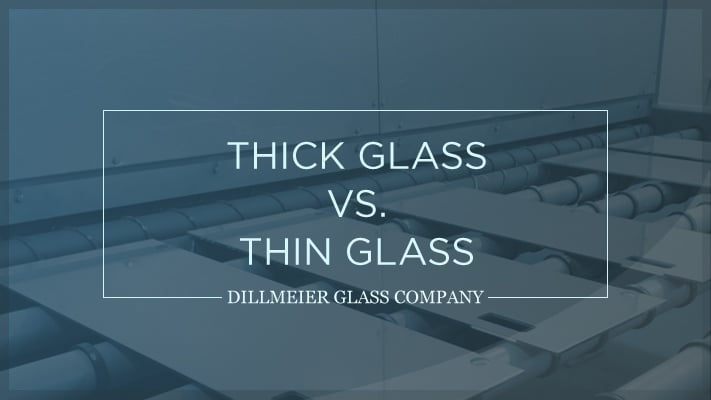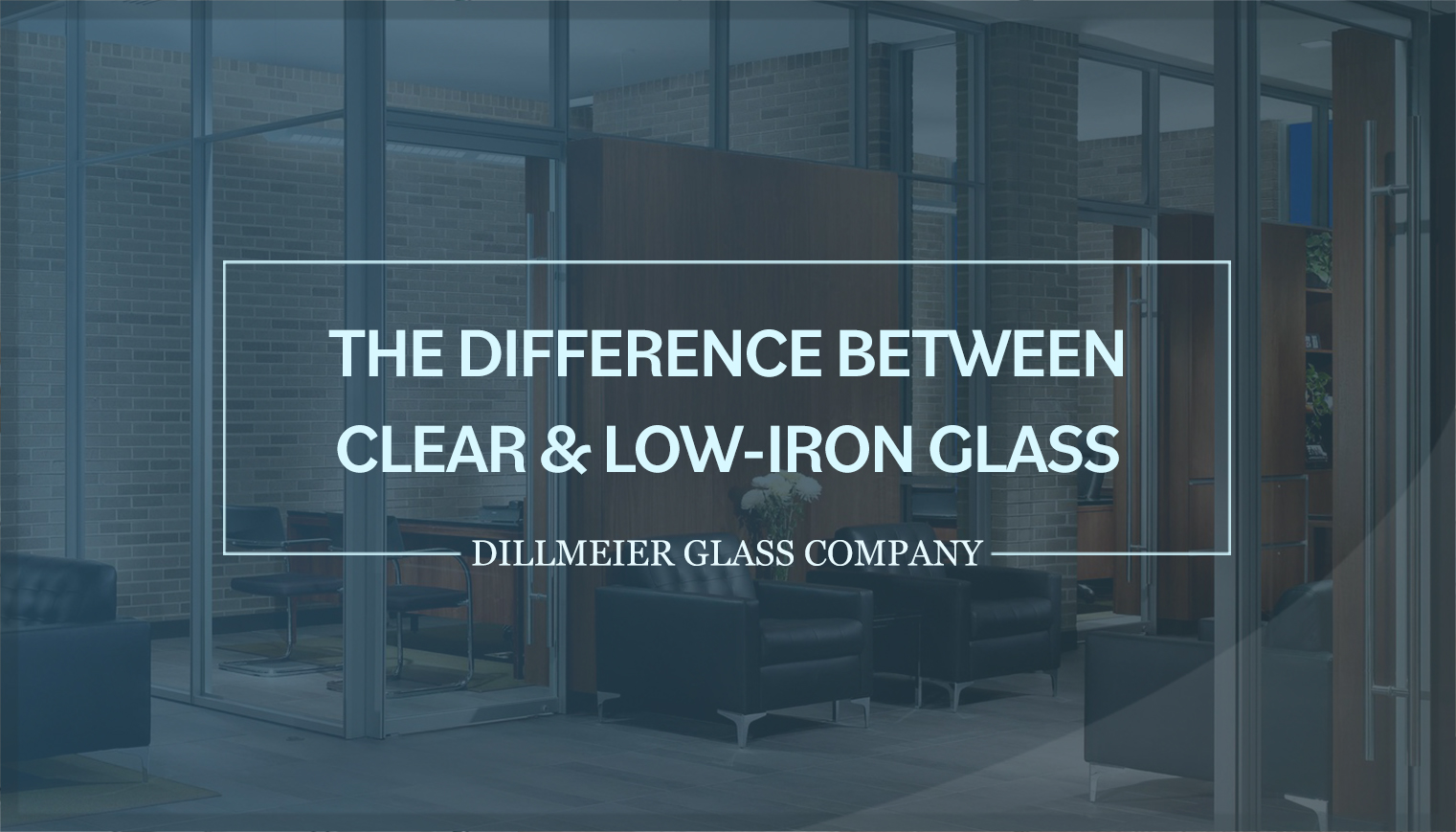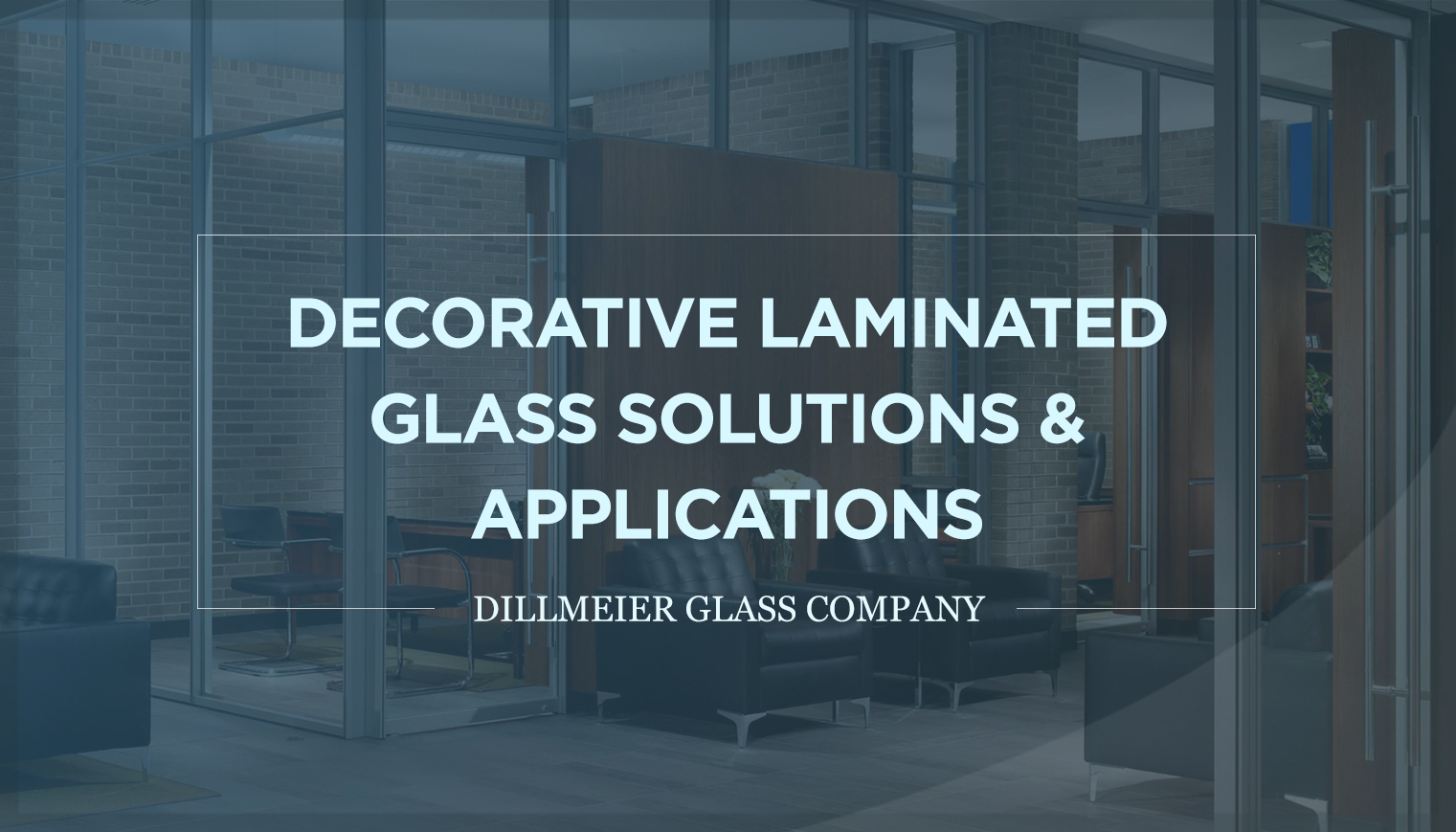Thick Glass vs. Thin Glass

Editor’s Note: This blog was originally published in October 2016 and has been revised to reflect industry updates.
When ordering custom glass products, one of the most frequently asked questions is: What type of thickness are you seeking? While it might seem thicker glass is superior the answer is actually dependent on the specific application, use case, and finished product.
Each glass type has its own unique purposes and benefits, so there are several considerations when choosing optimal thickness levels.
While thick glass is stronger than thin glass, boasts more pronounced edges, and is less likely to bow or warp under stress—there’s still a trade-off. The former is heavier and more costly than the latter, so its robust composition may not be suited for certain projects. Lighter, thinner glass is a preferred alternative to plexiglass and acrylic, and can be integrated with other construction materials, such as wood and aluminum.
Below we’ll discuss thickness ranges, differences, specific applications, and more.
Glass Thickness Ranges & Suitable Applications
Before deciding on optimal thickness levels, let’s first examine specified ranges with suggested applications:
- 1/8 Inch (3 Millimeters): Frames, Insulated Windows & End Tables
- 3/16 Inch (5 Millimeters): Tabletops, Display Cases & Shelving
- 1/4 Inch (6 Millimeters):Tabletop Covers, Single-Pane Windows, Display Shelves & Shower Doors
- 3/8 Inch (10 Millimeters); 1/2 Inch (12 Millimeters): Shower Doors, Tabletops, Walls, Partitions & Railings
- 5/8 Inch (16 Millimeters): Shower Doors, Walls, Partitions & Railings
- 3/4 Inch (19 Millimeters): Shower Doors, Storefronts, Tabletops & Flooring
- 1 Inch (25 Millimeters): Tabletops, Museum Exhibits, Counters & Reception Desks
What Products Require Thick Glass?
Commonly used in tabletops, museum exhibits, counters, and reception desks, the highest thickness level for tempered glass measures 1 inch. Thick-tempered glass is also suited for applications in retail stores, food services, and other industries requiring sturdy, transparent displays.
Thicker glass cuts are preferable for frameless, UV-bonded vitrines, display cases, hoods, and cubes. The thicker the edge, the more surface area available for UV-bonding glass to glass. Many commercial interior glass applications, such as modular walls, also require thicker glass to withstand high stress and bending.
Architects and designers with high-end retail clients typically request 3/8-inch and 1/2-inch glass for low-iron retail fixtures, UV-bonded jewelry cases, or modular office walls.
Glass is also typically thicker around areas with high stress levels, such as an ice hockey arena. This application requires thickness of between 1/2 and 5/8 inches—anything lower could lead to cracking and warping.
Is Thick Glass Harder to Break?
In short, yes. Thicker glass can withstand higher tension levels and so-called “smash-and-grab” scenarios, but could still separate if improperly tempered, or during incorrectly placed and drilled holes and notches. For best practices, review our blog “Glass Tempering Guidelines: 5 FAQs,” or download our handy Tempering Guidelines checklist.
How Does Glass Thickness Affect Light & Transparency?
For interior applications and spaces requiring more natural illumination, thinner glass is best. Consider low-iron decorative glass for even greater transparency. Any thickness level is appropriate for energy-efficient tactics and conservation.
What Products Require Thin Glass?
The thinnest piece of glass to withstand tempering is 1/8-inch thick. Its delicate structure makes it more susceptible to breakage, however, so it won't work for every application or product. Although retail stores boast fixtures crafted from thicker glass, many designers opt for the most popular option—1/4-inch glass—when planning display cases, counters, and vitrines.
A reputable glass fabricator can help with project characteristics for appropriate thickness.
What Are Some Advantages of Thin Glass?
Thin glass is lighter, sustainable, and economical, and its low weight and other efficiencies equate to lower freight and shipping costs. Added flexibility is another benefit for transparent design and upgraded aesthetics. These characteristics also position thin glass for use in the solar, architecture, and automotive industries, among others.
Choosing the Best Glass Thickness
When determining optimal glass thickness, it’s best to consult with a reputable, experienced, and knowledgeable fabricator such as Dillmeier Glass Company.
Contact Dillmeier Glass Company to learn more about the required dimensions and thickness levels for your next glass project!


